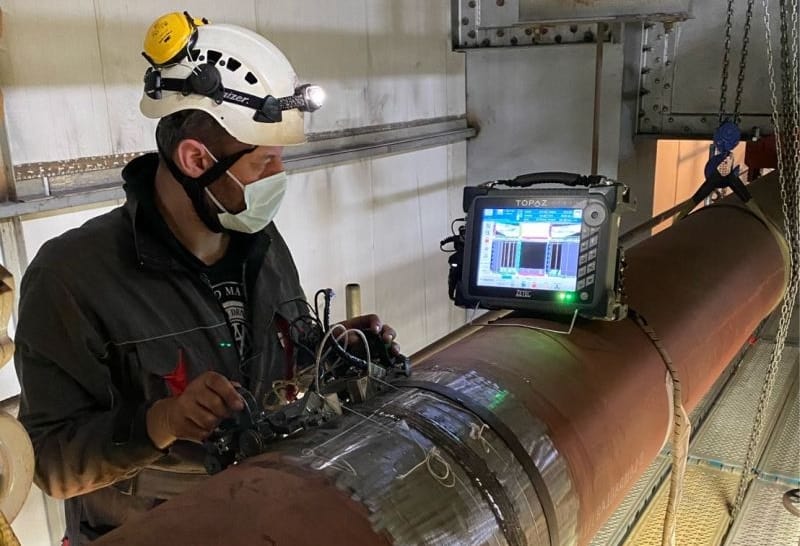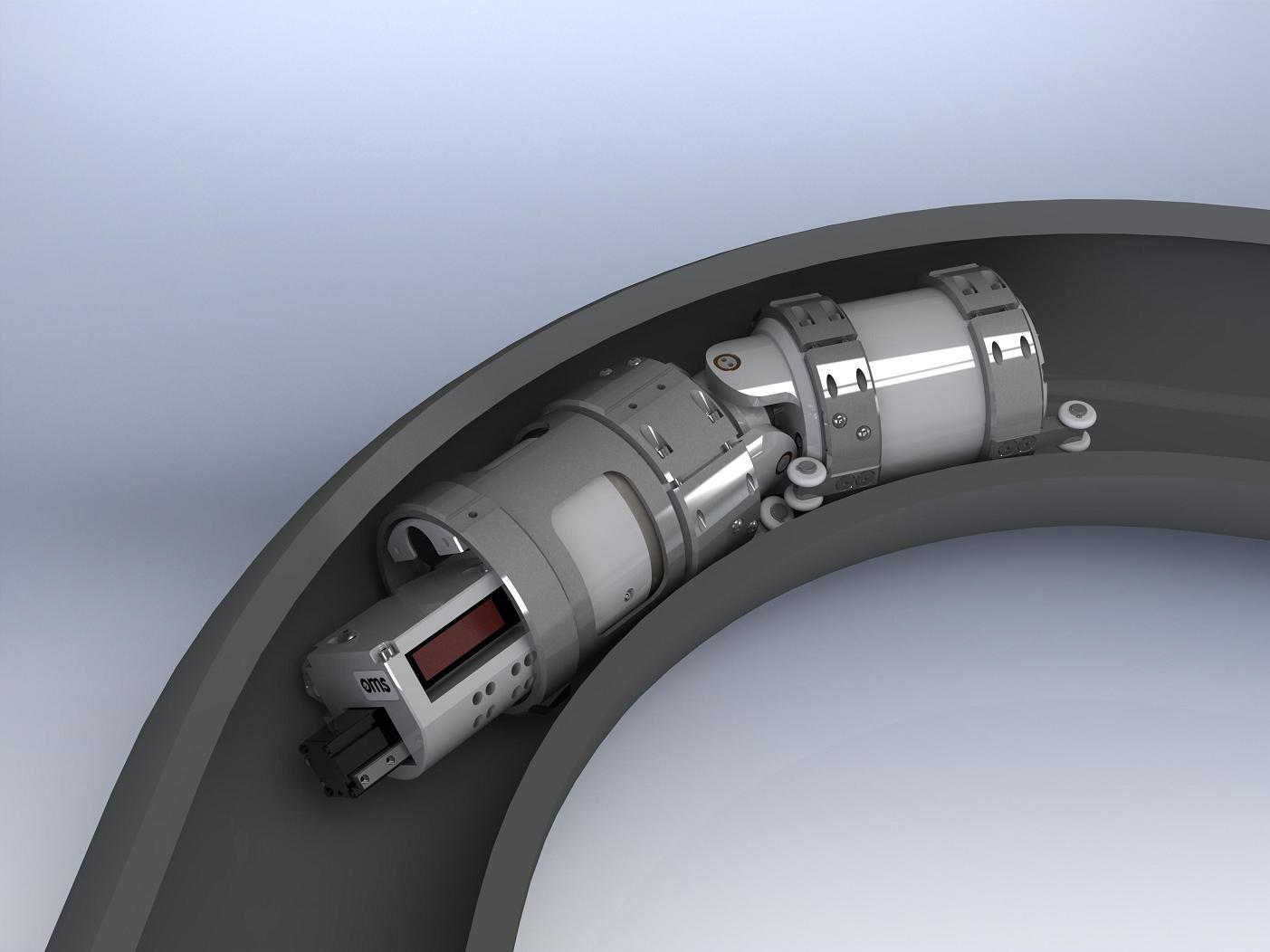Comprehensive Summary of Pipeline Welding Inspection Procedures
Pipe welding inspection procedures play an essential duty in assuring that welded links satisfy strict industry criteria and specifications. From careful pre-welding inspections to detailed post-weld analyses, a well-defined assessment procedure is necessary for maintaining the architectural stability of pipes.
Pre-welding Assessment Preparations
Before beginning the welding process, detailed pre-welding evaluation prep work are vital to ensure the honesty and quality of the weld joint. These prep work entail a precise exam of the materials to be bonded, the welding equipment, and the workplace. First of all, the products should be evaluated for any flaws, contaminants, or variances that can compromise the weld. This consists of monitoring for proper product qualities, measurements, and surface conditions. Pipeline Welding Inspection. Furthermore, the welding tools needs to be examined to validate that it remains in good working problem, adjusted correctly, and appropriate for the certain welding procedure. Any kind of problems with the tools should be resolved without delay to protect against flaws in the weld. The work environment must be evaluated for cleanliness, proper ventilation, and safety measures to ensure a conducive setup for the welding operation. By performing detailed pre-welding examination preparations, possible concerns can be recognized and settled beforehand, bring about reliable and high-quality weld joints.
Welding Procedure Qualification
Detailed pre-welding evaluation prep work lay the foundation for the critical process of Welding Treatment Certification, making certain the stability and top quality of the weld joint. Welding Procedure Credentials (WPQ) is an important action in the welding process that includes testing and certifying welding treatments to ensure they meet details standards and demands. The WPQ process typically includes welding procedure spec advancement, welding procedure certification screening, and documents of the outcomes.
During welding procedure requirements advancement, essential details such as the welding procedure, welding materials, joint style, and welding specifications are specified to create a thorough treatment. Subsequently, welding treatment certification screening is performed to verify the proposed procedure's honesty. This testing frequently entails welding examination promo codes that are subjected to numerous mechanical and non-destructive tests to assess the weld's high quality and adherence to the specified criteria.
In-process Weld Examination
During the welding procedure, in-process weld examination plays a vital role in ensuring the quality and honesty of the weld joint - Pipeline Welding Inspection. This kind of examination entails checking the welding parameters, analyzing the weld bead formation, and discovering any possible issues or interruptions as they occur. By performing in-process weld examinations, welding drivers can quickly resolve any issues that might emerge, therefore making certain and avoiding further problems that the last weld fulfills the required requirements
Typical techniques utilized for in-process weld inspection consist of aesthetic examination, liquid penetrant testing, magnetic bit screening, ultrasonic testing, and radiographic screening. On the whole, in-process weld evaluation is crucial for maintaining the top quality and reliability of welded pipes.
Non-destructive Screening (NDT)
Non-destructive Testing (NDT) is an important method used in visit this page pipe welding evaluation to examine the integrity of weld joints without creating damages to the bonded framework. By utilizing various NDT strategies, assessors can examine the top quality of welds and determine any kind of defects or suspensions that may compromise the architectural sturdiness of the pipeline. Usual NDT techniques utilized in pipeline welding inspection consist of Radiographic Testing (RT), Ultrasonic Testing (UT), Magnetic Fragment Checking (MPT), Liquid Penetrant Screening (LPT), and Visual Testing (VT)
RT involves the usage of X-rays or gamma rays to create images of the inner framework of the weld, allowing assessors to detect issues such as porosity, fractures, or incomplete blend. Furthermore, VT involves aesthetic assessment of welds to identify any kind of noticeable imperfections.
Post-weld Examination and Paperwork

Paperwork of post-weld evaluation findings is vital for maintaining quality assurance documents and guaranteeing conformity with industry criteria and policies. Thorough reports need to include info about the assessment methods utilized, the location and nature of any type of issues discovered, and any rehabilitative activities taken - Pipeline Welding Inspection. Appropriate documents not just offers as a record of the weld's high quality however additionally aids in future maintenance and examination processes
Conclusion

To conclude, pipe welding inspection treatments play an important function in ensuring the top click for info quality and honesty of welds. From pre-welding assessments to post-weld paperwork, each step is crucial in keeping the safety and effectiveness of pipes. By adhering to established procedures and carrying out thorough evaluations, prospective issues can be identified and dealt with before they cause pricey repairs or failures. In general, adherence to appropriate assessment methods is key to the success of pipeline welding projects.
From precise pre-welding evaluations to detailed post-weld evaluations, a well-defined evaluation process is important for maintaining the structural soundness of pipelines. By performing in-process weld examinations, welding drivers can immediately deal with any type of issues that may arise, thus avoiding further issues and making certain that the final weld fulfills the needed specifications.
Usual techniques utilized for in-process weld evaluation include aesthetic examination, fluid penetrant testing, magnetic particle screening, ultrasonic testing, and radiographic screening.Non-destructive article source Screening (NDT) is a vital method used in pipeline welding examination to examine the integrity of weld joints without creating damage to the bonded structure. Post-weld examination includes numerous techniques to assess the welds for flaws, including aesthetic evaluation, color penetrant testing, magnetic bit testing, ultrasonic screening, and radiographic screening.